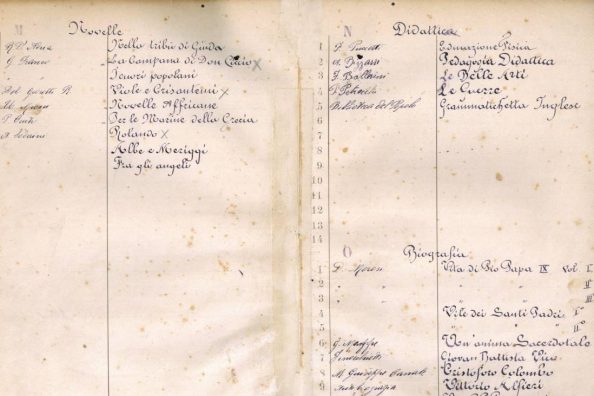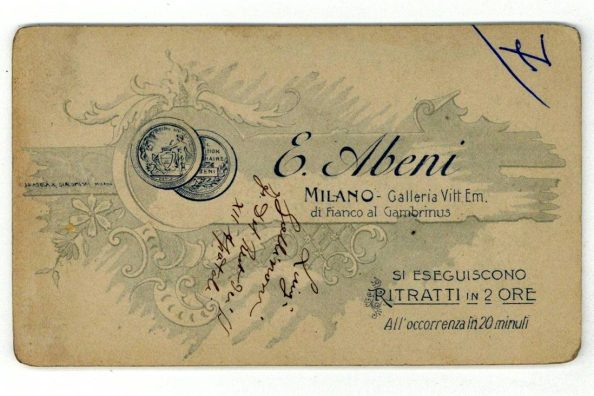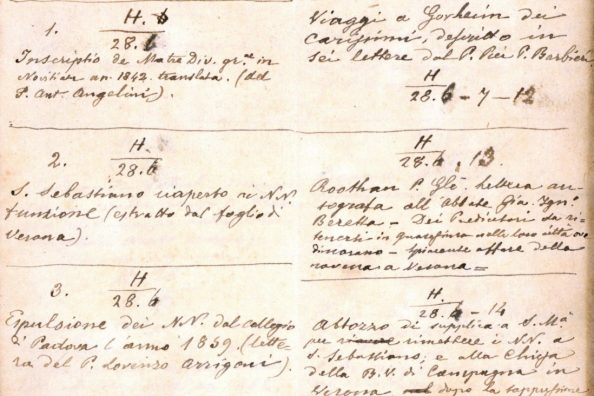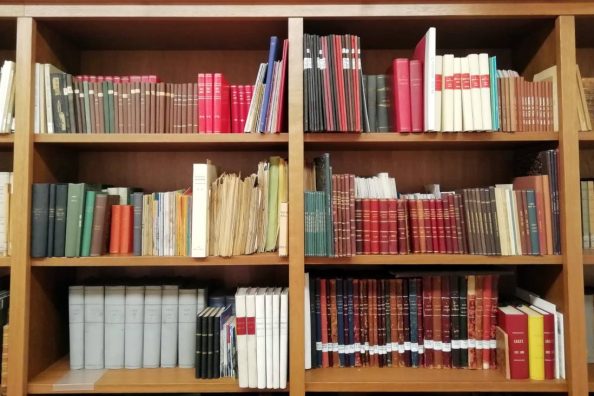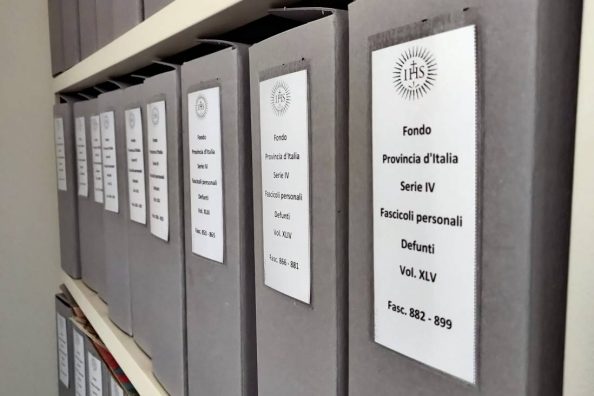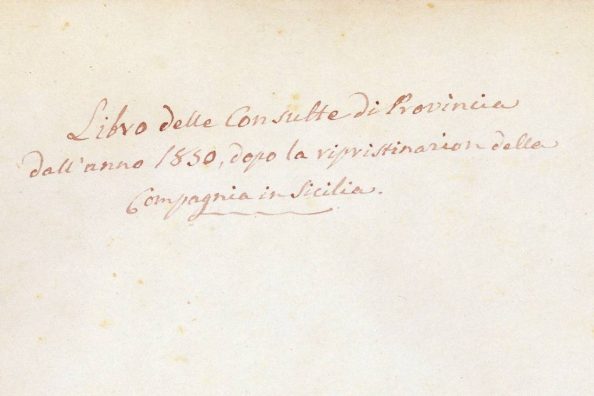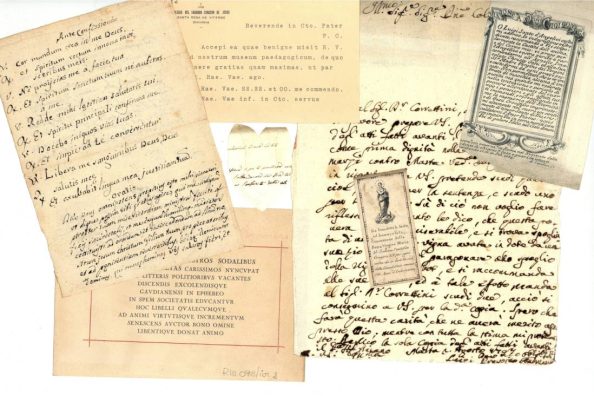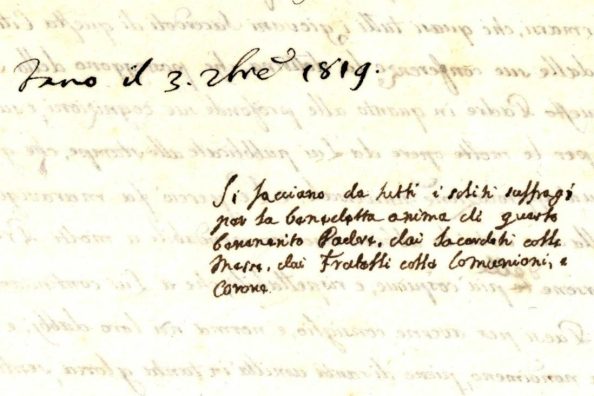Archival surprises

Tidying up documentary collections one can come across many small surprises, such as special objects or letters. Some prelude to interesting stories, others do not offer enough information to carry out research.
Today we tell of the discovery of a drawing, the one that accompanies our column, made in pencil.
It was not found among the papers of a boarding school, or a religious school, nor was it attached to the few documents concerning its author. The card had been folded and used to hold together the summary forms on the Jesuit candidate, Angelo Beneducci. It was only on rearranging the papers that it was discovered that there was indeed a drawing on the back of the improvised cover.
We can only reconstruct a few pieces of this story.
We are in Lombardy, it is 1895, and 22-year-old Angelo Beneducci aspires to enter the Society of Jesus. We get this information from the summary sheet that, even today, is drawn up for each candidate.
Angelo would never enter the novitiate, despite the vocation for the Company felt since he was eight years old and the positive opinion of those who met him and signed the forms: Fr Locatelli, Fr Rambaldo and Fr Mai. He would probably have entered as a brother, in fact he comes from a poor family and is a wood carver and craftsman, but he decides not to express any preference for the tasks he might receive as a Jesuit.
The drawing and the accompanying message, signed by Angelo himself, tell us of a certain talent as an artist and above all that when he came to the Provincial Curia he took this sketch with him as a gift to the Provincial.
Unfortunately, since he did not continue his journey within the Society of Jesus, the story stops here and we can learn nothing more about Angelo’s life through our papers.
In this case, researchers turn to other archives, following other avenues of research: historical diocesan archives to verify the presence of the subject in parishes close to that of his birth, possible marriages and death; but also archives of other institutions that are reached through bibliographic research or further documentary investigation.
We do not know anything else about Angelo Beneducci, except that he has certainly been dead for decades, having been born in 1873, but a trace of his desires, of his talent, has remained, preserved also due to the choice, not exactly correct, of using that drawing as a folder.
Maria Macchi

